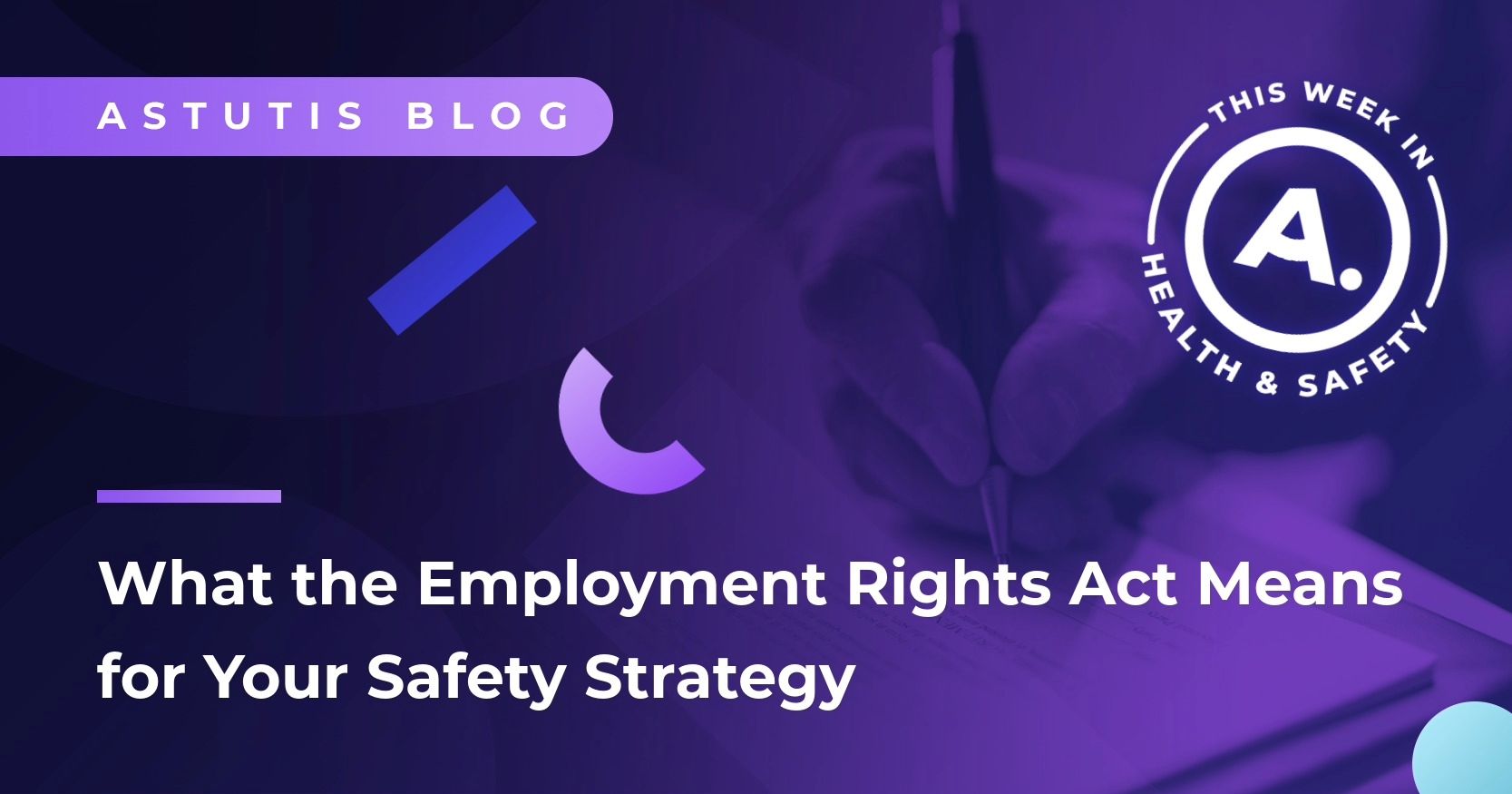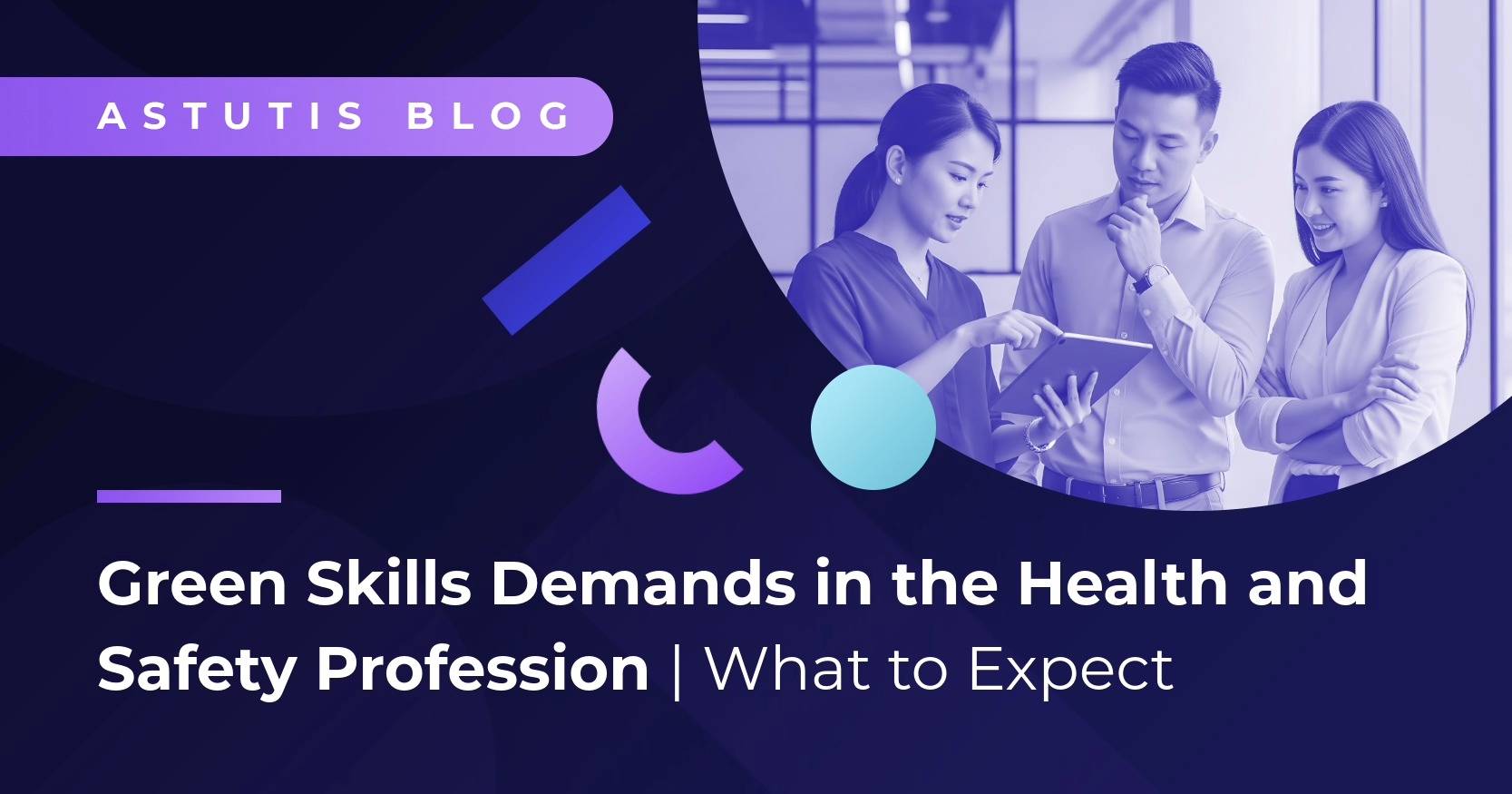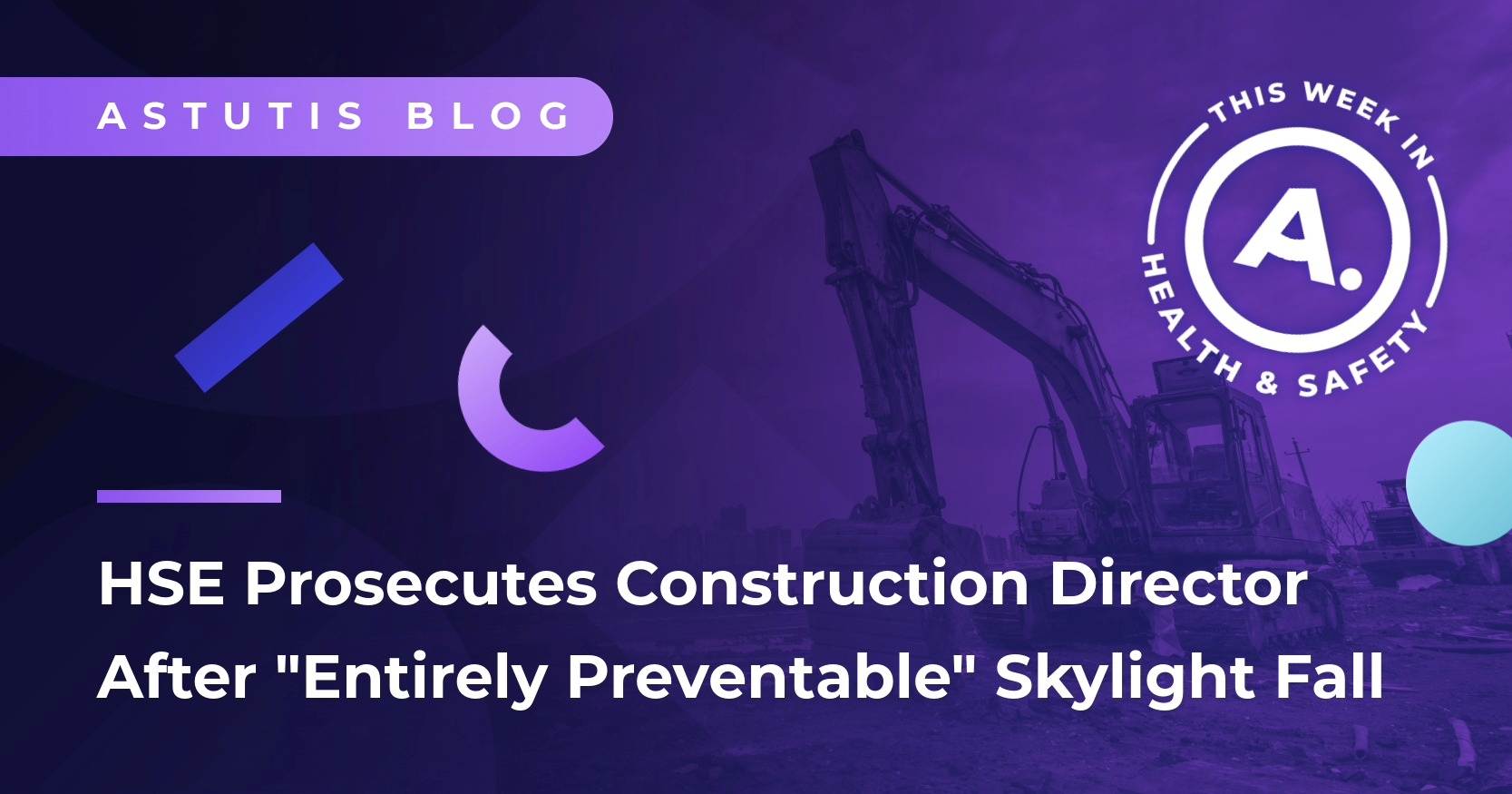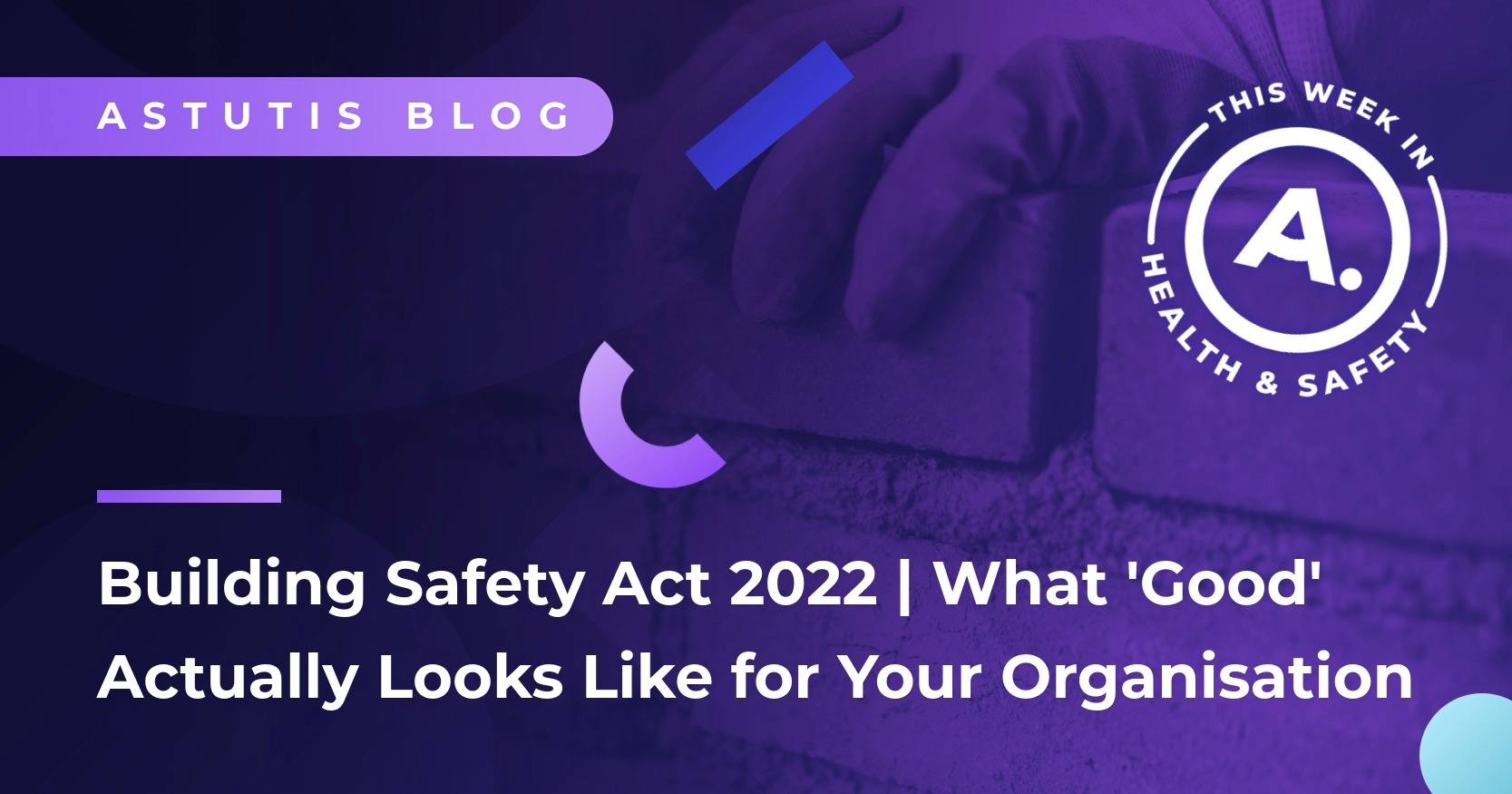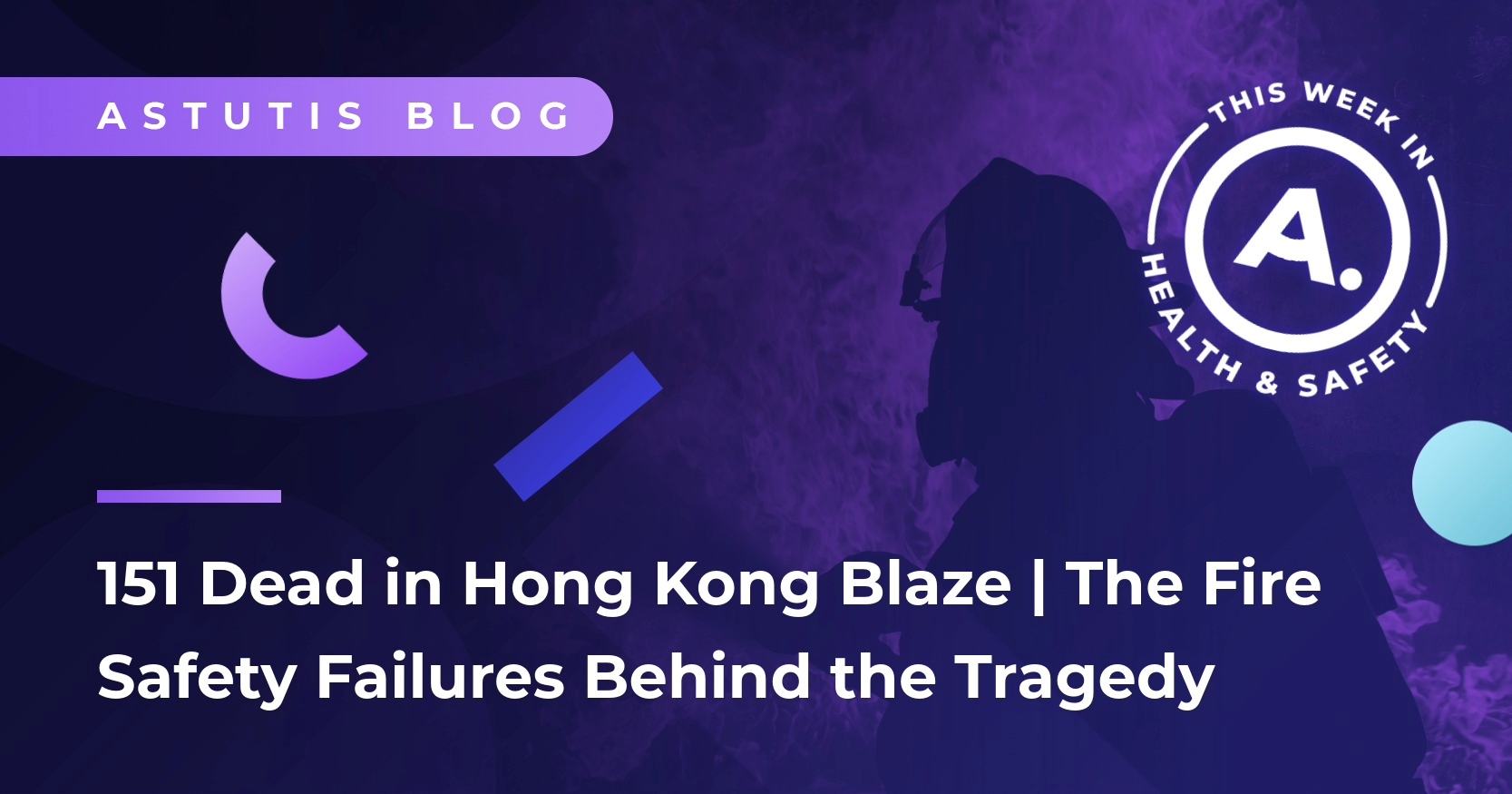A Career in Health and Safety
Have you been thinking about a career in health and safety but aren't quite sure where it will take you? Health and safety consultant Andrew Froude sat down with us to discuss his own journey and offer advice for those just starting out in their health and safety career.
How did your health and safety career all start?
You could say that I fell into health and safety (excuse the pun) – it certainly wasn’t a career path that I had mapped out when leaving school.
After finishing an apprenticeship as a tool-maker/technician (getting a mechanical engineering degree along the way) and then completing a four-year management trainee programme in a large PLC steel manufacturer in South Wales, I had my sights set on an engineering role and then ultimately senior management.
My first engineering role was as a Project Engineer during the installation of a new rolling mill in the section mill. This role was to last for 12 months where I had the responsibility for the installation of the fluid services (hydraulics, pneumatics and grease).
When this project ended, I landed a permanent position in January 1995 as Mechanical Engineer in the metal recycling division of the PLC steel company. This division comprised of seven sites in England and Wales supplying the scrap metal to the steelworks in South Wales.
Little did I know that this was where my first exposure to health and safety would occur, as the first task I was assigned, as the new Mechanical Engineer, was to complete the risk assessments for maintenance activities.
I was put through my NEBOSH General Certificate (which gave me a basic knowledge of the topic and its importance) and, with the support and monitoring from the PLC steel company’s Risk Management Team, began the task of carrying out the risk assessments and developing safe systems of work.
Several months into this new role, a fitter at one of the sites suffered an accident which resulted in him being off work for over a week. As a result, this accident was reported to the HSE under RIDDOR (Reporting of Injuries, Diseases and Dangerous Occurrences Regulations) which then prompted a visit from the enforcing authority to investigate the accident.
During the visit, the inspector also took the opportunity to take an in-depth examination of the general standards of health and safety at the site and was not impressed with what he saw. So much so, that he threatened to prosecute the company if a robust improvement plan was not forthcoming.
After the involvement of the PLC’s Risk Management Team, I was asked to take on the position of Risk Manager and take the metal recycling sites through the process of improving health and safety standards and performance (the PLC also appointed a retired senior HSE inspector as a consultant to assist). I agreed to the new role, with the understanding that it was only to be a secondment for 18 months or so, and then I was to go back to the engineering role. Needless to say, I enjoyed the role enough to make it permanent and never went back into engineering.
What was involved in the role and how did it develop?
Initially, the role concentrated on the completion of risk assessments and safe systems of work for production and maintenance tasks and implementing physical improvement on sites, such as raising the standards of guarding on machinery, improving welfare arrangements and introducing medicals and health surveillance.
Site safety meetings were set up to drive through improvements on site. These were, in turn, coordinated through a risk management committee, which met bi-monthly and was made up of senior managers from the metal recycling business, myself, our consultant, and representatives from the PLC’s Risk Management Team.
The role then developed into more involvement with the development and implementation of the health and safety management system. This also included writing and implementing a new health and safety policy and setting up a programme of site inspections and system audits.
During this time the metal recycling division of the PLC steel company was sold and our new owners then went on quite an aggressive program of expansion by acquisition, which soon took the number of sites from seven to nineteen over a three year period. This meant a time of rapid implementation of our policies and procedures into some of the new sites and a blending of our systems into some sites that already had existing management systems.
My title changed to Health, Safety and Environment Manager and the Safety Advisor that was already in position at one of the newly acquired sites reported to me. I also gained a Diploma in Environmental Management.
Several years later, the company was bought by a larger UK metal recycling company (which was Australian owned) which meant a coming together of the two businesses into one organisation comprising of thirty-seven operational sites and a head office. During this time, the existing Health and Safety Manager of the larger company left and I was appointed the Group Health, Safety & Environment Manager.
This role eventually, in 2002, resulted in me heading up a team of four Regional Health and Safety advisors, an Environmental Advisor, three part-time Consultants and an Administrator. It was during this time that I studied for and passed the Diploma in Health and Safety Management (Woodland Grange / Oxford Brooks University). This gave me a far greater knowledge and understanding of health and safety, enabled me to gain “Registered Safety Practitioner” status with IOSH and also gave the role greater recognition. In addition, it also gave me the knowledge to help shape the Health and Safety function within the company.
How did you get into health and safety training and consultancy?
In 2002 we decided to get our Site Managers trained in general health and safety. We decided to go down the IOSH course route and found a company in South Wales called Corporate Health and Safety Solutions (CHSS) to provide this training.
I had also enjoyed developing and delivering training internally to our managers on our new systems which we were implementing such as incident investigation and permits to work. When I learnt that CHSS were recruiting for consultants, I decided it was time for a new challenge and this was an opportunity too good to miss.
I joined CHSS in 2004 as a Health and Safety Consultant, firstly delivering IOSH courses and then moved up to the NEBOSH General Certificate.
How did your training and consultancy career develop?
Early in 2005, I gained full chartered membership with IOSH and also began to teach all parts of the NEBOSH Diploma. In 2006/07 I completed the City & Guilds “Preparing to Teach in the Life Long Learning Sector” (PTLLLS) course and was also promoted to Principal Health and Safety Consultant.
I found myself as Training Standards Manager. This role involved responsibilities including the updating of the course library, teaching the NEBOSH Diploma and IOSH Senior Executives courses, maintaining current training accreditation with professional bodies, delivering online training webinars and updating the supporting materials for online courses.
In 2014 it was time for a change and a chance to get back to what I enjoyed, teaching and delivering courses. I met up with some ex-colleagues from my time with CHSS and joined Astutis as a Health and Safety Consultant. I now deliver IOSH and NEBOSH courses, including Diploma, work with several large organisations in delivering bespoke training and have also completed several consultancy projects involving health and safety policy reviews and advice on safe systems of work.
My career to date has given me many opportunities to travel and has taken me to several countries including UAE, Qatar, Denmark, Austria, Czech Republic, Ireland and Slovenia.
What advice would you give those thinking about health and safety as a career?
A career in health and safety can be very challenging but also very rewarding at the same time.
It’s an enormous area, so whether you go into a specialism - such as occupational hygiene or process safety - or whether you become a generalist, here are some suggestions for you:
- Find something you enjoy and you feel you are good at. There can sometimes be nothing worse than doing something that you don’t enjoy. As someone once said, “Do what you enjoy and then work doesn’t feel like work”.
- Be willing to learn. No one has all the answers so never be afraid to identify your limitations, ask for advice and always be open to learning new things.
- Try to ensure that your health and safety influence is a positive one. One thing I will never forget, which was said to me in the early years of my career by one of the site managers, was – “Don’t bring me problems, bring me solutions”. Most companies don’t want someone with the traditional health and safety “clipboard” mentality just telling them what they cannot do. They want someone to tell them what the issues are and then to work with them to achieve a compliant and workable solution.
To discover where your NEBOSH course can take you in your professional journey, take a look at our blog.
Are you interested in Andrew's story? Have a read of our other case studies by clicking the button below.
Related Blogs

Real Life Stories




